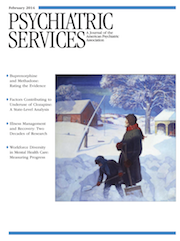Inadequate Treatment of Black Americans With Bipolar Disorder
Abstract
Objective
This study examined disparity in bipolar disorder treatment for black and white Americans.
Methods
The sample included 167 respondents to the National Comorbidity Survey Replication who had lifetime type I or II bipolar disorder. Treatment adequacy and potential correlates were assessed.
Results
No black respondent received minimally adequate mood-stabilizing treatment, and blacks were less likely than whites to have taken a mood stabilizer in the prior year. Service use, sociodemographic characteristics, and symptom expression did not explain this disparity.
Conclusions
There was substantial racial inequality in bipolar disorder treatment. Issues guiding this disparity may be unique to this disorder, and clarification of the source of disparity is needed.



